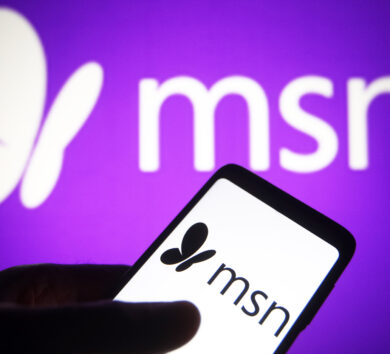Table of Contents
ToggleThe Evolution of Google News
Launched in 2002, Google News was designed to aggregate news stories from thousands of sources, providing users with a single platform to access a wide range of content. Over the years, it has evolved significantly, incorporating advanced algorithms and machine learning to tailor news delivery based on user preferences and behaviors. As of 2024, Google News features a user-friendly interface that categorizes news into sections such as Top Stories, Local News, World News, and more, making it easier for readers to find relevant information.
Customization and Personalization
One of the standout features of Google News is its ability to customize news feeds. Users can follow specific topics, sources, or regions, allowing for a more personalized news experience. This customization enables readers to receive updates on issues that matter to them, whether it’s politics, technology, health, or sports. Additionally, Google News utilizes machine learning to analyze user interactions, continuously refining the news feed based on individual interests.
However, this level of personalization also has its downsides. The algorithmic nature of the platform can create “filter bubbles,” where users are predominantly exposed to news that aligns with their existing beliefs and interests. This phenomenon can limit exposure to diverse viewpoints, potentially contributing to increased polarization in society.
The Role of Source Diversity
Google News aggregates articles from a multitude of sources, ranging from mainstream media outlets to independent publishers. This diversity is one of the platform’s key strengths, offering readers a broad spectrum of perspectives on current events. Users can easily compare how different outlets report on the same story, encouraging critical thinking and media literacy.
Despite this diversity, the challenge remains: not all sources are created equal. Users must navigate the landscape of journalism critically, recognizing that some outlets may exhibit bias or prioritize sensationalism over factual reporting. Google News does provide labels indicating the reliability of sources, but it ultimately falls on users to discern credible information.
Navigating Misinformation
In the age of misinformation, Google News faces the significant challenge of ensuring that users access reliable content. The platform has implemented various measures to combat the spread of false information, such as partnerships with fact-checking organizations and the use of algorithms to flag dubious content. Google also highlights articles from trusted sources and provides context for trending stories, aiming to promote a more informed public discourse.
However, the effectiveness of these measures is continually tested. The rapid dissemination of misinformation can outpace the ability of platforms to respond effectively. Users must remain vigilant and engage in media literacy practices to evaluate the accuracy of the news they consume.
The Impact of Algorithms on News Consumption
The algorithms driving https://sdnational.com play a pivotal role in shaping how users consume news. These algorithms prioritize stories based on relevance, timeliness, and user engagement, which can lead to an emphasis on sensational or trending topics over more substantial issues. This tendency can skew public perception, influencing which stories gain traction and which are overlooked.
Moreover, algorithmic biases can inadvertently favor specific narratives, further entrenching existing beliefs among users. In an era where attention spans are short, the platform’s design prioritizes immediate engagement, sometimes at the expense of in-depth analysis and comprehensive reporting.
User Engagement and Interaction
Google News also fosters user engagement through features such as comments, reactions, and shares. Readers can interact with articles, providing feedback that can influence how stories are presented in the future. This interactivity allows for a more engaged audience, but it can also lead to echo chambers where popular opinions dominate discussions.
Furthermore, the rise of user-generated content has introduced new dynamics to news consumption. Readers are increasingly turning to social media platforms to share their perspectives and experiences, which can complement or contradict traditional news narratives. Google News aggregates some of this user-generated content, but discerning credible voices in this sea of information can be challenging.
Local News and Community Coverage
In addition to national and international stories, Google News places an emphasis on local news, helping users stay informed about events and issues in their communities. Local news coverage is essential for fostering civic engagement and addressing the specific needs of communities. However, many local news outlets struggle financially, leading to cutbacks and closures that diminish coverage.
Google News has the potential to fill some of these gaps by aggregating local reporting from various sources. However, the reliance on algorithms to surface local news may not always guarantee comprehensive coverage. Users must actively seek out local sources to ensure they are well-informed about their communities.
The Future of Google News
Looking ahead, the future of Google News in the USA will likely involve further advancements in technology and a growing emphasis on addressing challenges such as misinformation and bias. As artificial intelligence continues to develop, Google may enhance its ability to deliver more nuanced and relevant news to users.
Additionally, collaboration with journalism organizations and educational institutions could promote media literacy and critical thinking among users. Encouraging audiences to engage with diverse perspectives will be vital in fostering a more informed citizenry.
Conclusion
Google News has become an essential resource for millions of Americans seeking to stay informed in a fast-paced digital world. While its ability to aggregate diverse news sources is a significant strength, users must navigate the complexities of misinformation, algorithmic bias, and source reliability. As we continue to engage with digital news platforms, fostering critical thinking and media literacy will be crucial to ensuring a well-informed public. In this rapidly changing landscape, the role of platforms like Google News is more important than ever in shaping how we understand and engage with the world around us.

